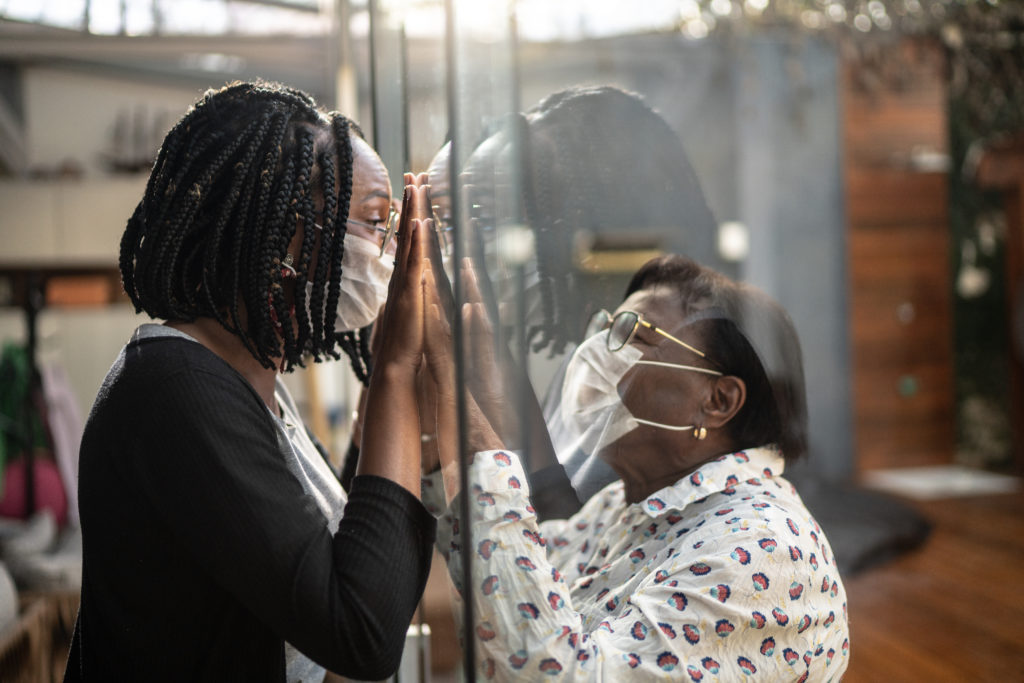Delta Variant – Staff Vaccinations and Retention
First, a quick disclaimer.
We are not the CDC, and we are not your local or state health authority.
So, we aren’t recommending a strategy on how to deal with COVID, and you should always rely on what official agencies are recommending for dealing with COVID or any other medical issue.
Having said that….
At the top of everyone’s mind right now is this:
“Are lockdowns in senior living coming back?” and/or “Has Delta changed the game on preventative measures?”

THE NUMBERS:
Regardless of what state you are in, your senior living resident vaccination rate is probably in excess of 90%, and in fact, probably 95%+.1
So far, it appears that although the vaccines (Pfizer and Moderna) are less effective in stopping the Delta variant overall, they seem to remain effective in keeping the viral load low which leads to low risk of symptoms so severe they require hospitalization or lead to death.2
So, Delta “breaks through” more, but if someone is vaccinated their risk remains relatively low. At least from the data we have so far.3
For instance, in the state of Minnesota, breakthrough deaths as a % of breakthrough cases are .6%. And this assumes all breakthrough cases are reported. They are not, they are underreported.4

STAFF VACCINATION:
As most in the industry know, President Biden mandated nursing homes to require vaccination of their staff, which includes assisted living facilities.
The mandate will be set forth in regulations from the Centers for Medicare and Medicaid Services.
Prior to Delta, the facts pointed to COVID being highly dangerous to people over the age of 65 (your residents) and COVID being of low risk to people under the age of 65 (your employees), provided that people who contract COVID do not have complicating comorbidities of obesity, clinical anxiety, diabetes, high blood pressure or an immune-compromised malady.5
The average vaccination rate for senior living staff is 65% and hospitalization numbers are rising in 45 states.6
The risk of catching COVID-19 among the vaccinated is significantly lower than the risk for the unvaccinated.7
And as we discussed above, the risk of death or serious symptoms is dramatically lower if you do get COVID if you have already been vaccinated or have previously had COVID.
VACCINATING AGAINST LOCKDOWNS:
Our industry is facing a major labor shortage.
And COVID, is not going away.8
This creates a hard pinch of senior living community operators.
If we require vaccinations and see vaccine-hesitant labor go out the door or become more expensive, our operating costs go even higher.
However, if we fail to require vaccinations and COVID infections spike in residents (many of whom have comorbidities) and staff, then we will be forced to return to lockdowns.
So, as a community there are two options:
Back to lockdowns and all the associated costs and diminished new resident move-ins.
Or require vaccinations for all staff and all new residents, which will dramatically reduce the risks of high infection rates or a new wave of deaths in senior living facilities.
For most communities, President Biden (for good or bad) is taking that decision out of our hands by his executive order.

If you are a CCRC with assisted living, there is often staff cross over. So even if Independent Living isn’t required to have vaccinated staff members (not known until the Centers for Medicare and Medicaid Services recommendations), there is enough staff cross over to make it unworkable to not have staff-wide vaccine requirements.
Given the permanent nature of COVID, the protection vaccination provides, and the costs of lockdowns, the universal requirement of the vaccine is probably our only option and the smartest economical option.
Even if it means higher labor turnover and labor costs.
It beats the alternative of high costs and business model destruction due to lockdowns.
VACCINE INCENTIVES:
Vaccine incentives work.9
The two best incentives for vaccines are bonuses and lotteries.10
A simple $50 to $100 bonus paid to each employee who has gotten the vaccine is a great way to start.
Of course, be prepared for previously vaccinated employees to raise their hands as well.
But a vaccine drive day where a crisp $50 or $100 is placed in the vaccinated person’s hand after the shot works well.
Another option is to have a lottery, where each vaccinated person can qualify for a grand prize and/or multiple smaller prizes that they can choose from.
These incentives, coupled with a deadline of when everyone will have to be vaccinated, will lift your vaccine rates.
Finally, few things work as well as a personal communication from the Executive Director to the employee asking them to vaccinate and showing them pertinent information on how vaccines reduce their risk of serious complications or death.
Throughout this whole process, it’s important to remember that the goal is to minimize labor turnover and maximize vaccination rates. Keep your communications professional, respectful and discrete.
Until the onslaught of the Delta variant, vaccine hesitancy for people under the age of 50 was entirely logical. The Pfizer and Moderna vaccines were proving to be highly effective and the risk for people under the age of 50 without comorbidities was low. So, seniors were protected by the vaccine and younger people were at limited risk.
Delta has changed the game, however, and now younger workers have got to be part of the first line of defense as overall vaccine prevention efficacy is falling.
Since senior living residents often have a comorbidity risk, as a community, we have no choice to vaccinate en masse or risk another round of debilitating lockdowns.

PREVENTION
Even with a fully/mostly vaccinated community, including residents and staff, there’s still a risk of Delta spreading, or maybe even another variant here soon (fingers crossed that doesn’t happen).
Online ordering is a great way to minimize risk of spreading diseases in your senior living community or be prepared to minimize disruptions if a short-term lock down is needed, or mandated.
Online ordering deployment and usage in FullCount’s® 500+ senior living community customers grew over 600% in 2020.
Most of this growth was due to concerns related to COVID-19.
Residents no longer had to walk down to the dining room to order their food, greatly decreasing their chances of contracting the virus.
For seniors, the ability to order food from their room is an amenity that increases overall satisfaction and is a critical selling point for prospective residents.
Click here to learn more about online ordering.
- https://www.mayoclinic.org/coronavirus-covid-19/vaccine-tracker
- https://www.ndm.ox.ac.uk/files/coronavirus/covid-19-infection-survey/finalfinalcombinedve20210816.pdf
- https://www.healthline.com/health-news/risks-of-the-delta-variant-for-vaccinated-vs-unvaccinated-people#A-more-contagious-variant https://www.thelancet.com/journals/eclinm/article/PIIS2589-5370(21)00397-7/fulltext
- https://bringmethenews.com/minnesota-news/breakthrough-covid-infections-rise-but-hospitalization-death-rates-among-fully-vaccinated-remain-low
- https://www.clinicalmicrobiologyandinfection.com/article/S1198-743X(21)00367-0/fulltext
- https://seniorhousingnews.com/2021/07/26/the-risk-is-significant-delta-variant-threatens-senior-living-industrys-covid-19-recovery/
- https://www.cnbc.com/2021/08/24/cdc-study-shows-unvaccinated-people-are-29-times-more-likely-to-be-hospitalized-with-covid.html
- https://www.theatlantic.com/health/archive/2020/08/coronavirus-will-never-go-away/614860/
- https://www.mcgill.ca/oss/article/covid-19-health/do-vaccine-incentives-actually-work
- https://www.scientificamerican.com/article/from-1-million-lotteries-to-free-beer-do-covid-vaccination-incentives-work1/
